- Know
about the key folk dances of Andhra Pradesh, Kerala, Tamil Nadu and Karnataka.
India
has a rich cultural heritage that has existed for centuries. There are
different folk dances in each state. The author proposes to write five articles
on folk dances of each region north, south, east, west and union territories.
Each region would include numerous states. Part one i.e. this one covers South
India namely the states of Kerala, Tamil Nadu, Andhra Pradesh and Karnataka.
Folk dances of Kerala
1. Kaikottikali
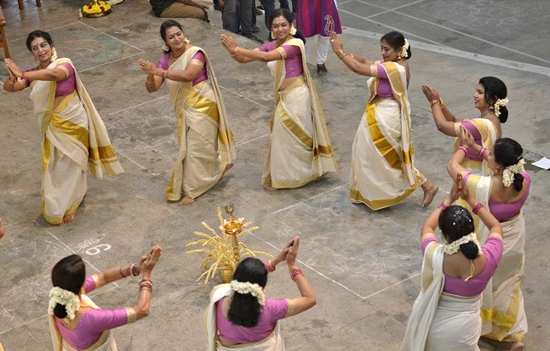
Kaikottikali (clap and dance), one of the most popular folk dance of Kerala, performed exclusively by women, during social and religious occasions. “Kai” means hand, “Kotti” means to clap and “Kali” means play or dance, hence clap and dance together, signifying unity and bonding of humanity. This dance is also known as thiruvathirakali and is danced in circular patterns, where the
dancers move both clock-wise and anti-clock wise with slow, graceful and
gliding movements, similar to the movements seen in the feminine, lyrical classical dance of Kerala,
known as Mohiniattam.
To see video of dance 3 minutes
2.
Padayani
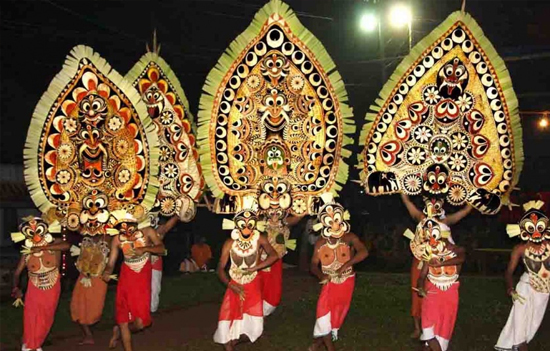
Padayani
is a folk dance featuring the goddess in her varied manifestations and
attributes revealing universal motherhood and the virile aspect of the
destroyer of evil. It is performed in Bhadrakali temple in areas like
Kottangal, Ottara and Kadammanittha etc.
Inspired
by Hindu traditions, it is believed that this dance was performed by Lord Shiva
to appease Goddess Durga, after she defeated the demon Darika. Dancers appear
with masks known as kollam that
represent spiritual energies and divine characters for e.g. Ganapathi Kollam,
Yakshi Kollam, Pakshi Kollam, Pishachu Kollam and Bhairavi Kollam etc. The dance
is performed to the beats of the chenda and other instruments.
To see
video of dance
1.17 minutes
3.
Theyyam
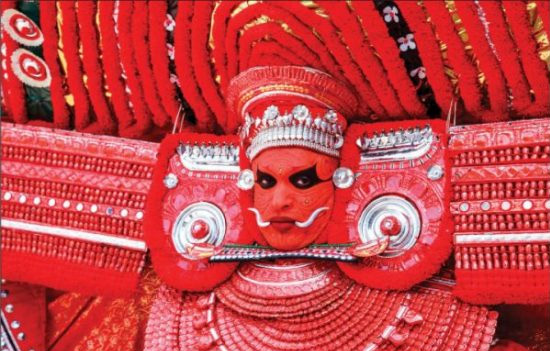
Theyyam
is a colourful dance, particularly noteworthy for its elaborate and large head
gear that symbolise or portray the mythological character represented by the
dancer, popular in north Kerala, in Kolathunadu. This dance has its ritualistic
significance and is performed to appease and make peace with gods to ensure
good harvest, health and prosperity. There are particular communities that
perform the theyyam, they are known as Vannan, Malayan, Anjunoottan, Kopalar
etc.
Also read Experiencing
the Theyyam dance of Kerala
To see video of dance 6 minutes
Folk dance of Tamil Nadu
1.
Oyilattam
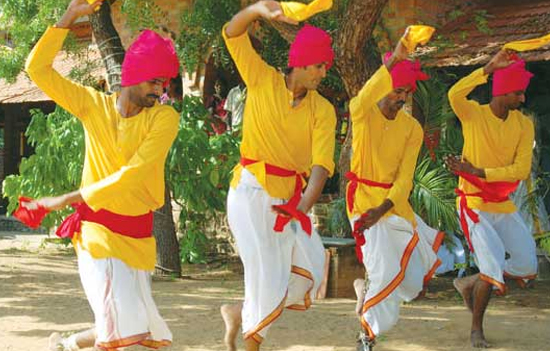
Oyilattam
is originally performed by men, as they move to the rhythmic beats of the
percussion instrument known as Thavil.
The dancers hold colourful kerchiefs and flags in their hands and bells tied
around the ankles and dance with jingels and vibrancy and intricate movements,
revealing songs and stories relating to the Ramayana and the Mahabharata.
To see video of dance 4 minutes
2.
Mayilattam
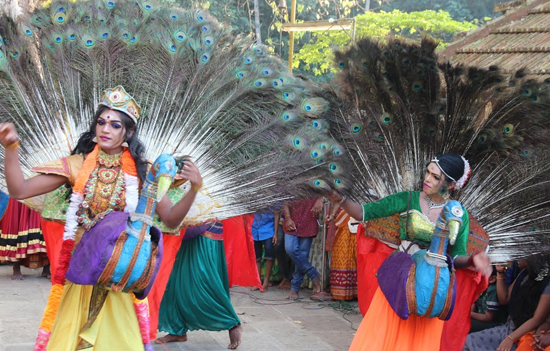
Mayilattam as the name signifies is the dance of the
peacock, hence the dancer appears in the typical disguise of the peacock with
long tail of beautiful feathers. There is only one peacock or more, along with
the drummer who plays the Dhol and the small drums played with sticks. This
dance is not easy as the dancer has to move and dance with the typical
characteristics of the peacock.
To see video of dance 4 minutes
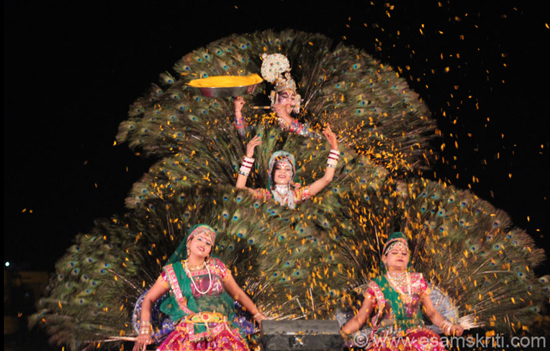 Braj ko Holi – dance with peacock feathers. Krishna with flute and Sudarshan Chakra.
Braj ko Holi – dance with peacock feathers. Krishna with flute and Sudarshan Chakra.
3.
Kummi
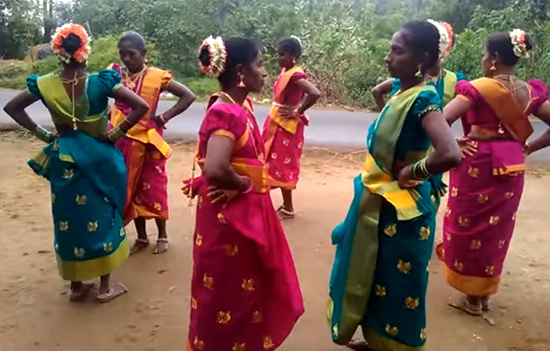
Kummi is a folk dance performed by women in
which they move in circular patterns. They move in rhythm and uniformity of
movements, signifying unity and bonding with each. This dance is particularly
performed in festive occasions like Pongal and Navaratri.
To see video of dance 5 minutes
4.
Garadi
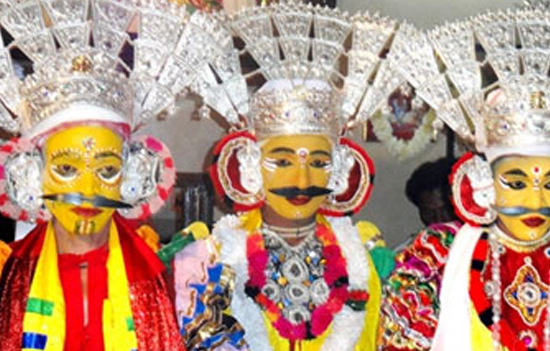
Garadi
is the acrobatic dance of the monkeys as the dancers appear as monkeys. It is
believed that this dance was originally performed by Sugreev to celebrate the
safe return of Lord Rama and Sita, after defeating Ravana. The dancers, mainly
men dance with ten iron rings in each leg which is known as Anjali. The dance is performed for
hours, sometimes full night too.
To see video of dance 1.26 minutes
Folk dance of Andhra Pradesh
1.
Veerabhadra Nrityam
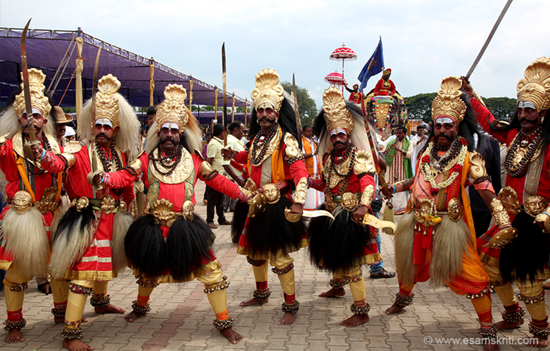 Mysore Dussehra 2017
Mysore Dussehra 2017
Veerabhadra
or Veerangam dance is performed as a tribute to Lord Shiva. This dance is
related to the incarnation of Lord Shiva as Veerabhadra, as he is completely
enraged by the embarrassing treatment offered by King Daksha to his daughter
Sati, who indulges in self-immolation. Veerabhadra destroys everything. This
dance is performed as an age old custom and also as a form of worship to Lord
Shiva.
To see video of dance 5 minutes
2.
Butta Bommalu
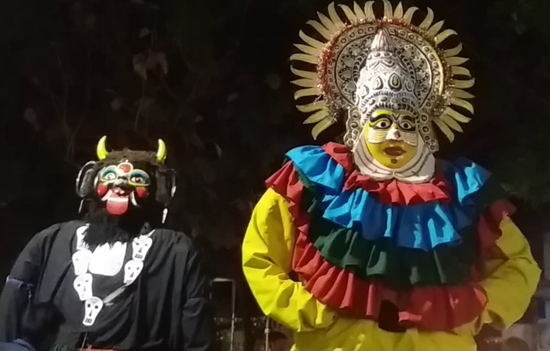
Butta
Bommalu is the known as the dance of masks or basket toys as the costume is so
elaborate like huge toys that create a rare spectacle. It is based on stories
of traditions, the dancers sing and dance, revealing varied stories and they
appear as Lord Rama, Sita, Hanuman etc. The appearance of huge toys attracts
lot of attention. Particularly children are excited to watch them perform.
To see video of dance 2 minutes
3.
Kollatam
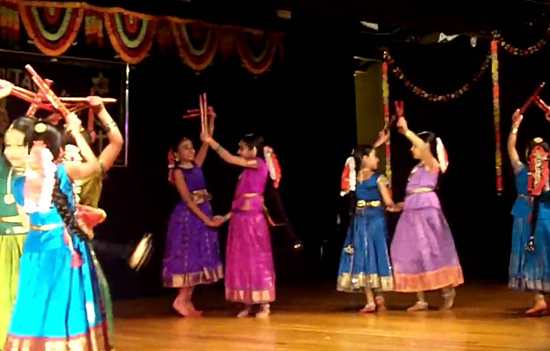
Kollatam
or stick dance in which the dancers dance along with sticks, maintaining fine rhythm
while dancing. It is believed that the dance was performed to destroy the
malevolent demon who created havoc in the village. The dance is performed by
young girls. After witnessing this dance, the demon quickly relinquished his
abhorrence and became peaceful.
To see video of dance 4 minutes
Folk dance of Karnataka
1.
Dollu Kunitha
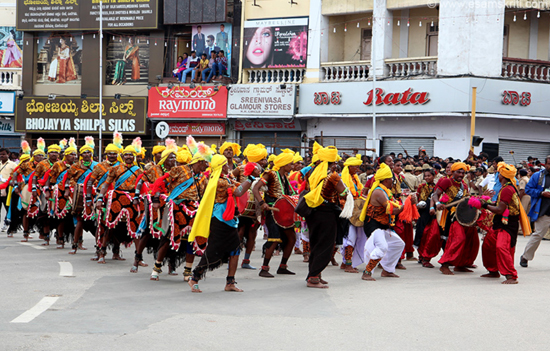 Mysore Dussehra 2017.
Mysore Dussehra 2017.
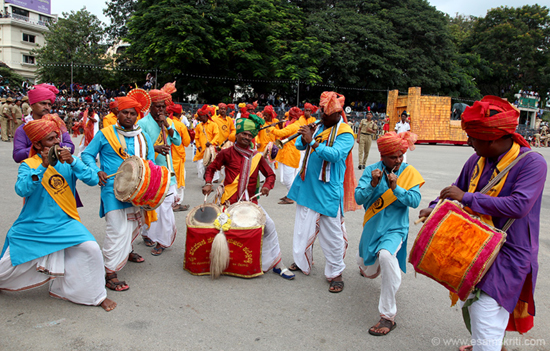 Mysore Dussehra 2017.
Mysore Dussehra 2017.
Dollu
Kunitha is a dance with huge drums as the dancers are drummers as well, as they
move and dance along with rhythmic beats of the drums. This dance is performed
as a worship to Lord Shiva, as a part of a ritual, particularly observed by the
Kuruba Gowda community of North Karnataka. This dance is also known as the Bhairava dance, as it celebrates the
killing of demons and is performed fiercely with the beating of drums. It is featured
in festivals like the Karaga festival or Bangaluru Habba.
To see video of dance 6 minutes
2.
Gaarudi Gombe
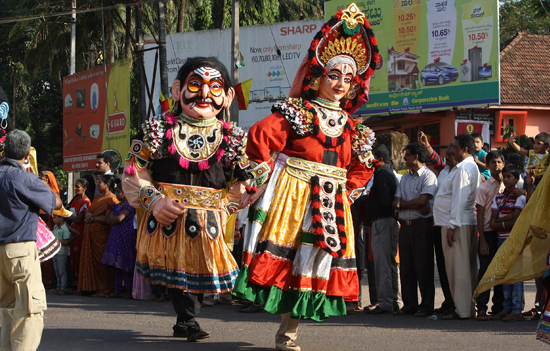
Gaarudi
Gombe is a dance in which the costume is of great importance. Here the dress
suits are made of bamboo sticks. The Karaga dance is performed with metal pot,
on which stands tall a floral pyramid, balanced on carriers head.
To see video of dance 2 minutes
3.
Pata Kunitha
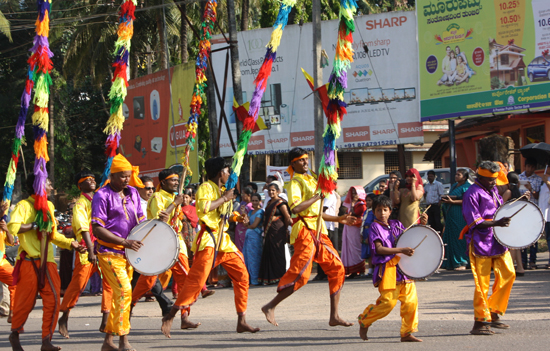
Pata
Kunitha and Puja Kunitha is a ritualistic folk dance, performed when rituals
are to be performed. Hence, these traditional dances are performed with a lot
of devotion and excitement. The dance is for the betterment of the society and
peaceful living.
To see video of dance 3 minutes
Guru Vijay Shanker is a professional Kuchipudi, Kathakali
exponent, dance teacher, choreographer, actor and arts critic for over four
decades, contributing for national and international publications. He is
particularly credited for his lecture-demonstrations on Indian classical
dancing which is a fine combination of both education and entertainment.
To read all
articles by Author
To read all
articles on Indian Dance Forms